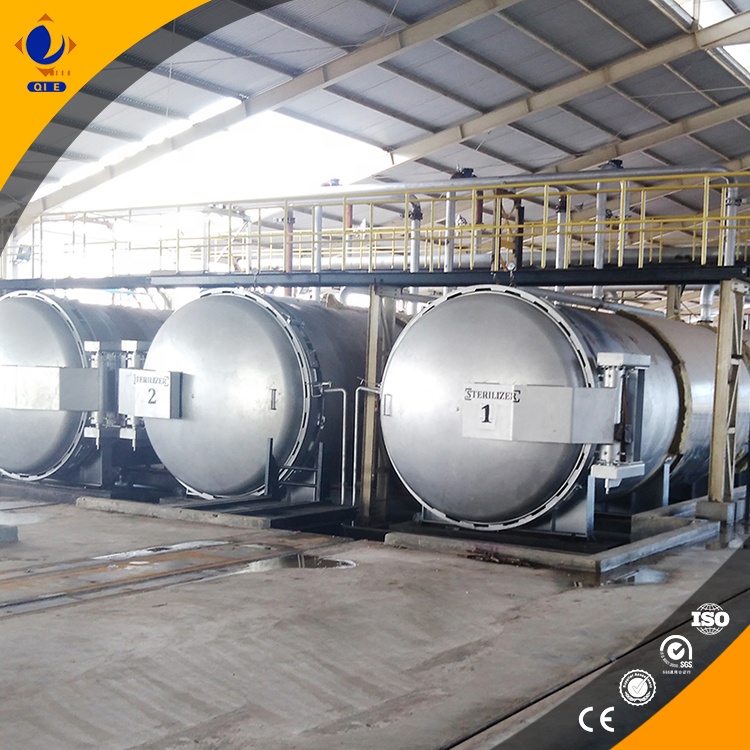
Industrial-grade vegetable oil refining is a crucial process that ensures the quality, safety, and marketability of vegetable oils. In this article, we will delve into the four key steps of industrial-grade vegetable oil refining, exploring the mechanisms of impurity removal and operational essentials of degumming, deacidification, decolorization, and deodorization. We'll also highlight the technological advantages of modern continuous refining lines and how different process combinations impact key oil product indicators.
Phospholipids are one of the main impurities in crude vegetable oil. Degumming aims to remove these phospholipids. By adding water or acid to the crude oil, phospholipids hydrate and separate from the oil phase. The physical and chemical principle behind this is the hydrophilic nature of phospholipids. In modern continuous refining lines, precise temperature control, usually around 60 - 70°C, is crucial for efficient degumming.
Typical process parameters for degumming: water addition of 2 - 3% by weight of the oil, reaction time of 20 - 30 minutes.

Free fatty acids in vegetable oil can cause unpleasant odors and affect the stability of the oil. Deacidification is used to reduce the free fatty acid content. There are two main methods: chemical and physical. Chemical deacidification involves adding an alkali solution to neutralize the free fatty acids. Physical deacidification uses steam distillation under high - temperature and vacuum conditions. Modern continuous refining lines can achieve a high degree of vacuum, around 2 - 5 mmHg, to effectively remove free fatty acids.
Typical process parameters for deacidification: reaction temperature of 180 - 220°C, steam flow rate of 2 - 5% of the oil weight.
Vegetable oil often contains pigments such as carotenoids and chlorophyll, which affect the appearance of the oil. Decolorization uses adsorbents like activated clay or activated carbon to adsorb these pigments. The choice of adsorbent and the operating conditions are critical. In modern continuous refining lines, the temperature during decolorization is usually maintained at 90 - 110°C.
Typical process parameters for decolorization: adsorbent dosage of 1 - 3% of the oil weight, contact time of 20 - 30 minutes.

Deodorization is the final step to remove unpleasant odors from the oil. It uses steam distillation under high - temperature and high - vacuum conditions. Volatile compounds responsible for the odor are removed. Modern continuous refining lines can precisely control the temperature, usually around 230 - 260°C, and the vacuum degree to ensure effective deodorization.
Typical process parameters for deodorization: steam flow rate of 2 - 4% of the oil weight, deodorization time of 60 - 120 minutes.
Different combinations of the above four processes can have significant impacts on the key indicators of the refined oil, such as color, smoke point, and oxidation stability. For example, a more thorough decolorization process can result in a lighter - colored oil, which is more appealing to consumers. A well - controlled deodorization process can increase the smoke point of the oil, making it more suitable for high - temperature cooking. The following table shows a performance comparison of different process combinations:
| Process Combination | Color (Lovibond scale) | Smoke Point (°C) | Oxidation Stability (hours) |
|---|---|---|---|
| Basic combination | 5 - 7 | 180 - 200 | 10 - 15 |
| Enhanced combination | 2 - 3 | 220 - 240 | 20 - 30 |
For on - site operators, daily maintenance is essential to ensure the smooth operation of the refining equipment. For example, the filter cloth should be replaced regularly, usually every 1 - 2 months depending on the production volume. Sealing detection should be carried out weekly to prevent air leakage, which can affect the vacuum degree in the refining process.
Do you have a proper maintenance schedule for your refining equipment? Your factory's production efficiency and product quality may depend on it.

For export - oriented enterprises, environmental compliance and quality consistency are of strategic importance. Adhering to international environmental standards not only helps protect the environment but also enhances the company's reputation in the international market. Quality consistency ensures that customers receive products of the same high - quality level every time. Qi'e Group's refining technology is committed to achieving these goals.
Qi'e Group Refining Technology: Making Every Drop of Oil Meet Global Standards.
Are you ready to optimize your vegetable oil refining process? Visit https://grainoilmachinery.com/products/vegetable-oil-solvent-extraction-unit.html?Marketing=CAT to learn more about Qi'e Group's advanced refining technology and how it can help your business meet international standards and improve product quality.



